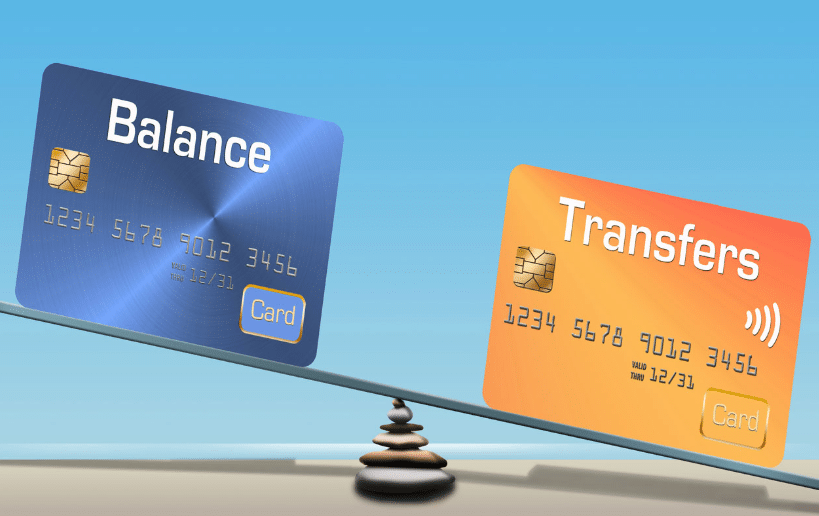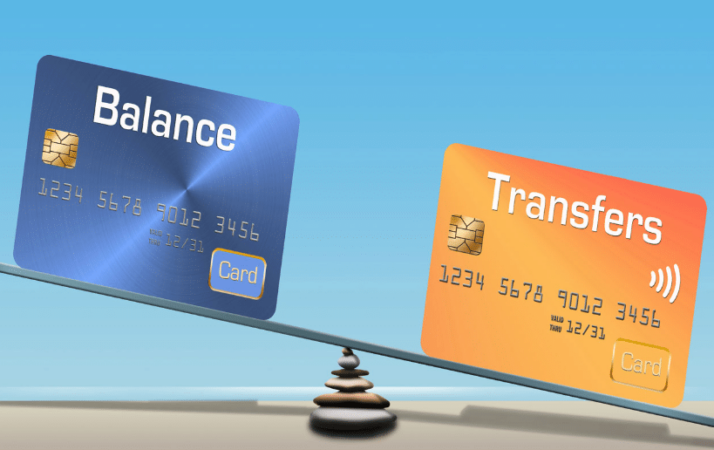
Credit cards free balance transfer offers can be a great way to save money on your debt. By transferring your balance to a new credit card with a lower interest rate, you can pay off your debt faster and save on interest charges. However, it’s important to understand the terms and conditions of these offers before you sign up.
For example, some offers may have a limited-time introductory APR, after which the interest rate will increase. Others may charge a transfer fee. It’s also important to make sure you’re eligible for the offer before you apply. If you’re not, you could be denied and your credit score could be negatively impacted.
What are Balance Transfers?

Balance transfers allow you to move outstanding debt from one credit card to another, often with a lower interest rate. This can be a useful strategy for saving money on interest charges and paying off your debt faster.
Benefits of Balance Transfers
Balance transfers can offer several advantages for consumers:
- Lower Interest Rates: One of the primary benefits of balance transfers is the potential to secure a lower interest rate on your debt. This can significantly reduce the amount of interest you pay over time, allowing you to pay off your debt faster.
- Consolidation of Debt: Balance transfers can help you consolidate multiple credit card debts into a single account. This can simplify your debt management, making it easier to track your payments and overall balance.
- Introductory Offers: Many credit cards offer introductory periods with 0% interest on balance transfers. This can provide a valuable window of time to pay down your debt without accruing interest charges.
Potential Drawbacks of Balance Transfers
While balance transfers offer potential benefits, it’s essential to be aware of the potential drawbacks:
- Balance Transfer Fees: Many credit cards charge a balance transfer fee, typically a percentage of the transferred balance. This fee can eat into the savings you might gain from a lower interest rate.
- Limited Time Offers: Introductory 0% interest periods on balance transfers are often limited to a specific timeframe. Once this period expires, the interest rate may revert to a higher standard rate.
- Credit Score Impact: Applying for a new credit card for a balance transfer can impact your credit score, especially if you have multiple inquiries in a short period.
- Minimum Payment Trap: While a lower interest rate can seem appealing, be mindful of minimum payments. If you only make minimum payments, it may take longer to pay off your debt, and you could end up paying more interest in the long run.
Free Balance Transfer Offers

Free balance transfer offers are a popular way for cardholders to consolidate debt and save money on interest charges. These offers allow you to transfer outstanding balances from other credit cards to a new card, often with a 0% introductory APR for a specified period.
Common Features of Free Balance Transfer Offers
Free balance transfer offers typically come with certain features, such as:
- Introductory 0% APR: This is a temporary period where you won’t accrue interest on the transferred balance. It can last for a few months to a year or longer.
- Balance Transfer Fee: Some offers may include a transfer fee, typically a percentage of the transferred balance. However, “free” balance transfer offers typically waive this fee.
- Minimum Payment Requirement: You’ll still need to make minimum payments on your balance, even during the introductory period.
- Eligibility Requirements: Credit card issuers may have certain eligibility requirements, such as a good credit score, a history of responsible credit use, and sufficient available credit on your existing card.
Comparing and Contrasting Free Balance Transfer Offers
It’s crucial to compare and contrast the terms and conditions of different free balance transfer offers before making a decision. Key factors to consider include:
- Introductory APR: While a 0% introductory APR is attractive, consider the APR that applies after the introductory period. This “go-to” APR will determine the interest you’ll pay if you haven’t paid off the balance by the time the introductory period ends.
- Transfer Fee: While “free” balance transfer offers typically waive the transfer fee, it’s essential to confirm that there are no hidden fees or charges associated with the transfer.
- Introductory Period Length: The length of the introductory period can significantly impact your ability to pay off the balance. Longer introductory periods give you more time to pay down the debt before interest starts accruing.
- Other Benefits: Some credit cards offer additional benefits, such as rewards points, travel perks, or purchase protection, which may be worth considering.
Factors to Consider When Evaluating Free Balance Transfer Offers
Here are some crucial factors to consider when evaluating free balance transfer offers:
- Your Credit Score: Your credit score plays a significant role in your eligibility for a balance transfer offer. If you have a lower credit score, you may not qualify for the most attractive offers.
- Debt Consolidation Goals: Consider your debt consolidation goals and how a balance transfer can help you achieve them. Ensure that the offer aligns with your financial objectives and that you have a plan to pay off the balance within the introductory period.
- Financial Situation: Evaluate your financial situation, including your income, expenses, and overall debt load. Make sure you can comfortably make the minimum payments on the transferred balance and avoid accruing interest.
- Terms and Conditions: Carefully review the terms and conditions of the offer, including the introductory APR, transfer fee, minimum payment requirements, and eligibility criteria. Ensure that you understand the terms before making a decision.
How to Find Free Balance Transfer Offers
Finding free balance transfer offers can be a smart move to save money on interest charges. It’s essential to know where to look and how to compare these offers effectively.
Reputable Resources for Finding Free Balance Transfer Offers
Several reputable resources can help you find free balance transfer offers. These sources provide comprehensive information and tools to assist you in your search.
- Credit Card Comparison Websites: Websites like Credit Karma, NerdWallet, and Bankrate offer tools to compare different credit cards, including those with free balance transfer offers. These platforms provide detailed information about interest rates, transfer fees, and other terms and conditions.
- Credit Card Issuer Websites: Many credit card issuers advertise their balance transfer offers directly on their websites. You can browse through their offerings and compare them to other options.
- Personal Finance Blogs and Websites: Numerous personal finance blogs and websites regularly review and recommend the best credit card offers, including balance transfer deals.
- Consumer Reports: Consumer Reports provides unbiased reviews and ratings of various financial products, including credit cards. They often highlight balance transfer offers with favorable terms.
A Step-by-Step Guide to Searching for Free Balance Transfer Offers
Finding the best free balance transfer offer requires a systematic approach. Following these steps can help you make informed decisions:
- Assess Your Needs: Determine the amount of debt you want to transfer, the desired interest rate, and the timeframe for repayment.
- Use Credit Card Comparison Websites: Utilize credit card comparison websites to filter your search by criteria such as free balance transfer offers, interest rates, and introductory periods.
- Compare Offers: Carefully review the terms and conditions of each offer, including interest rates, transfer fees, introductory periods, and annual fees.
- Check for Eligibility: Ensure you meet the eligibility requirements for the chosen offer. This may include credit score, income, and debt-to-income ratio.
- Apply for the Card: Once you’ve selected the best offer, apply for the credit card.
Utilizing Online Tools for Finding Free Balance Transfer Offers
Online tools and credit card comparison websites offer features to streamline your search and comparison process.
- Filters and Sorting Options: These platforms allow you to filter your search by specific criteria, such as free balance transfer offers, interest rates, introductory periods, and annual fees. You can also sort the results based on these criteria.
- Personalized Recommendations: Some websites use algorithms to analyze your credit score, debt, and other factors to recommend the best balance transfer offers tailored to your needs.
- Detailed Information and Reviews: These tools provide detailed information about each offer, including terms and conditions, interest rates, fees, and customer reviews.
The Transfer Process
Transferring a balance to a new credit card with a free balance transfer offer is a straightforward process. It involves applying for the new card, having your application approved, and then initiating the transfer.
Steps Involved in Transferring a Balance
The steps involved in transferring a balance to a new credit card with a free balance transfer offer are:
- Apply for a new credit card with a free balance transfer offer: Begin by researching and applying for a credit card that offers a free balance transfer. Compare offers, interest rates, and other terms to find the best fit for your needs. Be sure to check the card’s eligibility requirements and APR (Annual Percentage Rate) before applying.
- Get approved for the new credit card: Once you’ve applied for the card, you’ll need to be approved. The approval process can take a few days, and the lender will review your credit history and income to determine your eligibility.
- Initiate the balance transfer: After you’ve been approved for the new card, you can initiate the balance transfer. You’ll typically need to provide the credit card number, the amount you want to transfer, and the name of the creditor you’re transferring the balance from.
- Wait for the balance transfer to process: The balance transfer can take several days or even weeks to process. During this time, the new card issuer will contact your old creditor to verify the balance and request the transfer.
- Pay off the balance: Once the balance transfer is complete, you’ll be responsible for paying off the transferred balance on your new credit card. Make sure you understand the repayment terms and interest rates associated with the new card.
Documents and Information Required
To ensure a smooth balance transfer process, you’ll need to have the following documents and information readily available:
- Your existing credit card account information: This includes your account number, credit limit, and the name of the creditor.
- Your Social Security number: This is needed for the credit card issuer to verify your identity.
- Your income information: This is required to determine your creditworthiness.
- Your bank account information: You’ll need this to make payments on your new credit card.
Tips for a Smooth Transfer Process
To ensure a smooth and successful balance transfer process, consider these tips:
- Read the terms and conditions carefully: Before you initiate the balance transfer, make sure you understand the terms and conditions of the offer. This includes the interest rate, fees, and any restrictions.
- Time your transfer strategically: If you’re trying to take advantage of a promotional interest rate, try to initiate the balance transfer as soon as you’re approved for the new card. This will give you the maximum amount of time to pay off the balance before the promotional rate expires.
- Keep track of your payments: Once the balance transfer is complete, make sure you keep track of your payments and make them on time. Late payments can damage your credit score and increase the cost of borrowing.
- Consider using a balance transfer calculator: A balance transfer calculator can help you estimate the amount of interest you’ll pay over time and the length of time it will take to pay off the balance.
Considerations Before Transferring
Before diving into a balance transfer, it’s crucial to carefully assess your current debt situation and financial goals. A balance transfer might seem like a magical solution, but it’s not always the best approach.
To make an informed decision, consider the following:
Assessing Your Current Debt Situation, Credit cards free balance transfer
Understanding your current debt situation is vital before making any decisions about transferring your balance. Ask yourself the following questions:
- What is the total amount of debt you currently owe?
- What are the interest rates on your existing credit cards?
- What are the minimum monthly payments on your existing credit cards?
- How long will it take you to pay off your current debt at your current payment rate?
- What are your current spending habits and how much can you realistically afford to pay each month?
By honestly assessing your current situation, you can determine whether a balance transfer is a viable option for you.
Evaluating Your Financial Goals
Balance transfers are a tool to help you manage your debt. However, it’s essential to consider your long-term financial goals and how a balance transfer might impact them.
- What are your financial goals, such as buying a home, saving for retirement, or paying for your child’s education?
- How will a balance transfer affect your ability to achieve those goals?
- Will the new card’s terms and conditions help you reach your financial goals?
Potential Scenarios Where a Balance Transfer Might Not Be the Best Option
While balance transfers can be a helpful tool, they are not always the best solution. Here are some scenarios where a balance transfer might not be the best option:
- If you have a high credit utilization ratio, a balance transfer might not be approved.
- If you have a history of late payments, you might not qualify for a balance transfer offer.
- If you are not committed to paying down your debt, a balance transfer will not be effective.
- If you plan to make large purchases in the near future, a balance transfer might not be the best option.
Managing Your Balance After Transfer
You’ve successfully transferred your balance to a new credit card with a 0% APR offer, but that’s just the first step. Now, it’s crucial to manage your balance effectively to maximize the benefits of this transfer and pay off your debt faster.
Paying More Than the Minimum Payment
Paying only the minimum payment on your credit card can trap you in a cycle of debt for years. It’s essential to pay more than the minimum payment to significantly reduce your balance and get out of debt faster.
- By paying more than the minimum payment, you’ll be paying down the principal balance quicker, reducing the amount of interest you accrue.
- Even small increases in your payments can have a significant impact over time. For example, if you have a $5,000 balance at 18% APR, paying an extra $50 per month will shorten your repayment period by almost two years and save you over $1,000 in interest.
To calculate the impact of increased payments, use online debt calculators or contact your credit card issuer for personalized repayment projections.
Impact of Late or Missed Payments
While a balance transfer can provide a temporary reprieve from high interest rates, it’s vital to avoid late or missed payments. These can negatively impact your credit score and potentially negate the benefits of the balance transfer.
- Late payments can lower your credit score, making it more difficult to get approved for loans or credit cards in the future, and potentially increasing interest rates on future borrowing.
- Missed payments can lead to additional fees and penalties, further increasing your debt burden.
- Some balance transfer offers may have a grace period for the first payment, but it’s crucial to review the terms carefully and set reminders to ensure timely payments.
Final Summary: Credit Cards Free Balance Transfer

Ultimately, whether or not a free balance transfer offer is right for you depends on your individual financial situation. If you’re carrying a lot of debt on a high-interest credit card, a balance transfer offer could be a good way to save money and pay off your debt faster. However, it’s important to weigh the pros and cons carefully before you make a decision.
Questions and Answers
What are the benefits of a free balance transfer?
The main benefit of a free balance transfer is that you can save money on interest charges. By transferring your balance to a credit card with a lower interest rate, you can pay off your debt faster and save money in the long run.
What are the drawbacks of a free balance transfer?
Some drawbacks of free balance transfers include the possibility of transfer fees, introductory APRs that expire, and eligibility requirements that may not be met. Additionally, if you’re not careful about managing your balance after the transfer, you could end up paying even more in interest charges.
How do I find a free balance transfer offer?
You can find free balance transfer offers from a variety of sources, including credit card companies, online comparison websites, and financial advisors. It’s important to compare offers from different providers to find the best deal for you.





